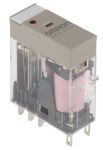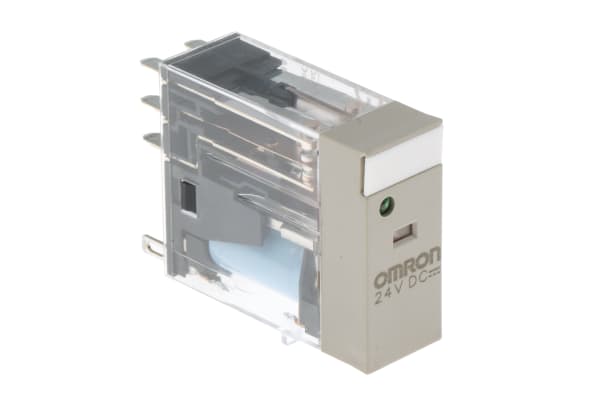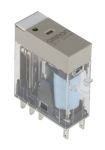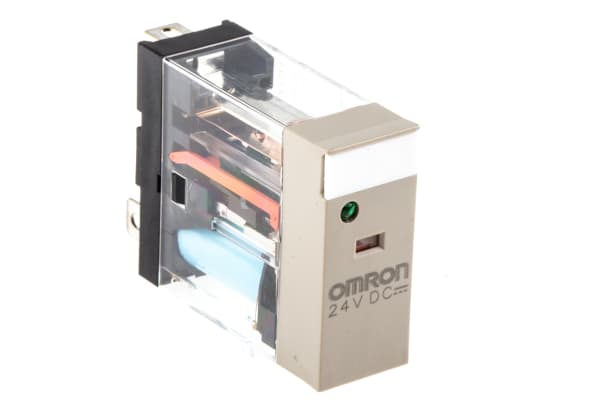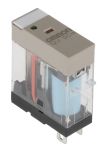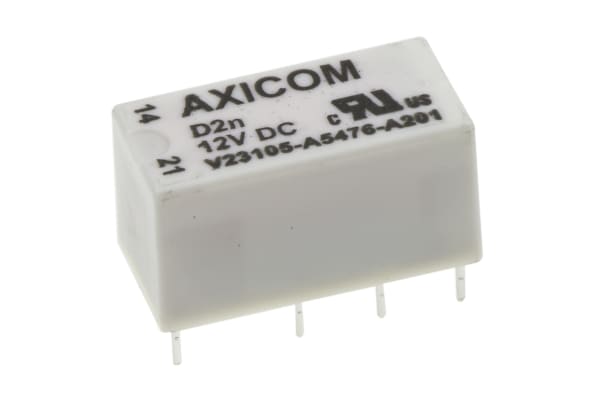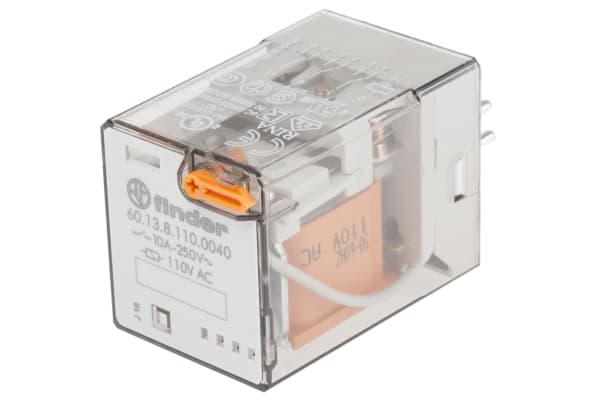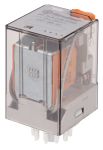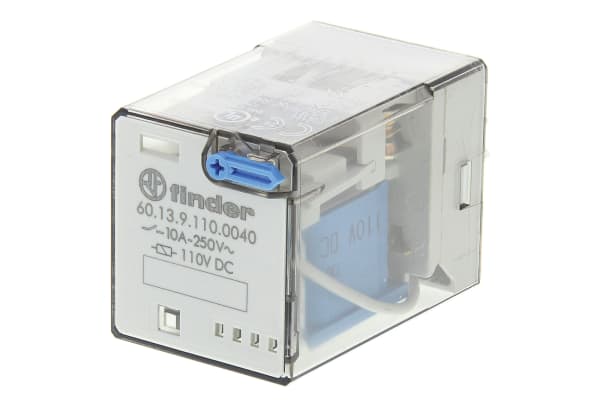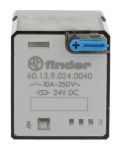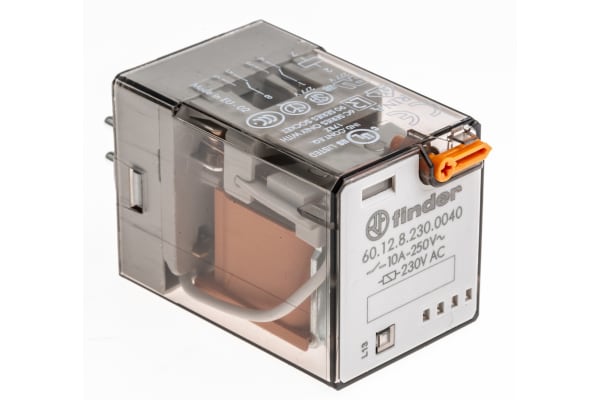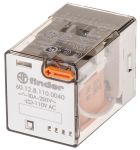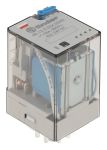Non-Latching Relays
Relays are electrical switches that are operated by electrical impulses with the primary function to open and close a circuit, they can also be referred to as industrial switches. There are 2 main types available, latching and non–latching relays.How do non-latching relays work?Non-latching relays are in a normally closed (NC) position and will stay in this state without power. When power passes through the circuit, the relay switched to a normally open (NO) position by using an internal coil to generate a magnetic force, holding this NO position. Once the current is turned off, it returns to the NC position. This makes non-latching relays well suited to push-button applications like keyboards and micro-controller input buttons.What are non-latching relays used for?Non-latching relays are highly durable and versatile components, making their performance long lasting and suitable for use in a wide range of applications, such as:Automotive enginesHousehold appliancesIndustrial machineryMedical equipmentTelecommunications equipmentWhat is the difference between latching and non-latching relays?Both types of relays in similar in design and function, however, a significant difference between them is that a latching relay will remain in the last position it when it was last powered, whereas a non-latching goes back to its normal position. This makes each more type of relay suitable for different applications. Considerations when selecting a relayWhen choosing a relay, it is important to consider a number of specifications to ensure it is fit for purpose, some factors include:Coil voltage – the required voltage to actuate the switching mechanism. If a voltage is too high this could damage the components, if it is too low then it will not actuate. Contact configuration – This is the state the contacts are in without power. For example SPST, single pole single throw.Contact material – the relay contacts are available in many materials that have certain properties. Common materials are gold, silver, tin oxide and nickel Coil power – the amount of power (watts) the coil operates at. This must match the power in the circuit for correct function. Coil resistance – the amount of resistance (ohms) in the circuit that the coil creates.
-
Omron, 230V ac Coil Non-Latching Relay DPDT, 5A Switching Current Plug In, 2 Pole, G2R-2-SN 230AC(S)
IDR469,592.53 -
Omron, 110V ac Coil Non-Latching Relay DPDT, 5A Switching Current Plug In, 2 Pole, G2R-2-SN 110AC(S)
IDR262,120.11 -
Omron, 24V ac Coil Non-Latching Relay DPDT, 5A Switching Current Plug In, 2 Pole, G2R-2-SN 24AC(S)
IDR293,167.55 -
Omron, 24V dc Coil Non-Latching Relay DPDT, 5A Switching Current Plug In, 2 Pole, G2R-2-SN 24DC(S)
IDR283,203.00 -
Omron, 12V dc Coil Non-Latching Relay DPDT, 5A Switching Current Plug In, 2 Pole, G2R-2-SN 12DC(S)
IDR122,406.63 -
Omron, 230V ac Coil Non-Latching Relay SPDT, 10A Switching Current Plug In Single Pole, G2R-1-SN 230AC(S)
IDR246,596.39 -
Omron, 110V ac Coil Non-Latching Relay SPDT, 10A Switching Current Plug In Single Pole, G2R-1-SN 110AC(S)
IDR163,838.18 -
Omron, 24V ac Coil Non-Latching Relay SPDT, 10A Switching Current Plug In Single Pole, G2R-1-SN 24AC(S)
IDR237,470.96 -
Omron, 24V dc Coil Non-Latching Relay SPDT, 10A Switching Current Plug In Single Pole, G2R-1-SN 24DC(S)
IDR244,079.03 -
Omron, 12V dc Coil Non-Latching Relay SPDT, 10A Switching Current Plug In Single Pole, G2R-1-SN 12DC(S)
IDR118,315.92 -
TE Connectivity, 12V dc Coil Non-Latching Relay DPDT, 3A Switching Current PCB Mount, 2 Pole, V23105A5476A201
IDR52,549.89 -
Finder, 230V ac Coil Non-Latching Relay 3PDT, 10A Switching Current Plug In, 3 Pole, 60.13.8.230.0040
IDR300,195.18 -
Finder, 110V ac Coil Non-Latching Relay 3PDT, 10A Switching Current Plug In, 3 Pole, 60.13.8.110.0040
IDR366,275.88 -
Finder, 48V ac Coil Non-Latching Relay 3PDT, 10A Switching Current Plug In, 3 Pole, 60.13.8.048.0040
IDR300,195.18 -
Finder, 24V ac Coil Non-Latching Relay 3PDT, 10A Switching Current Plug In, 3 Pole, 60.13.8.024.0040
IDR266,315.71 -
Finder, 110V dc Coil Non-Latching Relay 3PDT, 10A Switching Current Plug In, 3 Pole, 60.13.9.110.0040
IDR177,473.88 -
Finder, 24V dc Coil Non-Latching Relay 3PDT, 10A Switching Current Plug In, 3 Pole, 60.13.9.024.0040
IDR271,560.21 -
Finder, 12V dc Coil Non-Latching Relay 3PDT, 10A Switching Current Plug In, 3 Pole, 60.13.9.012.0040
IDR334,599.10 -
Finder, 230V ac Coil Non-Latching Relay DPDT, 10A Switching Current Plug In, 2 Pole, 60.12.8.230.0040
IDR295,789.80 -
Finder, 110V ac Coil Non-Latching Relay DPDT, 10A Switching Current Plug In, 2 Pole, 60.12.8.110.0040
IDR376,030.65 -
Finder, 24V dc Coil Non-Latching Relay DPDT, 10A Switching Current Plug In, 2 Pole, 60.12.9.024.0040
IDR253,099.57 -
RS PRO, 24V ac Coil Non-Latching Relay DPDT, 10A Switching Current Plug In, 2 Pole
IDR151,461.16 -
RS PRO, 115V ac Coil Non-Latching Relay 3PDT, 10A Switching Current Plug In, 3 Pole
IDR65,556.25 -
RS PRO, 24V dc Coil Non-Latching Relay 3PDT, 10A Switching Current Plug In, 3 Pole
IDR123,875.09





